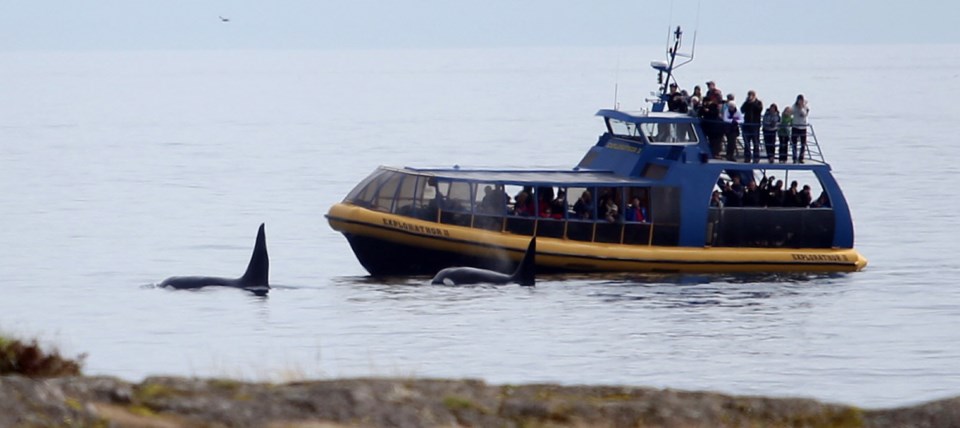Capital Regional District directors want to be consulted before the federal government implements a proposed action plan to protect endangered orca populations.
But they stopped short of endorsing a letter penned by Juan de Fuca director Mike Hicks, who said the action plan “although well intentioned, is potentially disastrous for our residents and First Nations.”
Fisheries and Oceans Canada has posted the proposed plan, which includes fishery closures and marine habitat protection, and is accepting public comment until Aug. 14.
“It’s a serious, serious, serious plan that they’re looking at,” Hicks recently told directors. “The action plan, if it’s adopted, parts of it are absolutely potentially disastrous — catastrophic, I’d say, for our residents and First Nations.”
The proposed measures could affect coastal waters from Port Renfrew to the Southern Gulf Islands and the Swiftsure Bank to the Fraser River, he said.
“It could affect all whale-watching businesses, First Nations, recreational and commercial fishers, salmon-enhancement volunteers and the socio-economic well-being of the Capital Regional District,” Hicks said in a letter to the federal government.
Aside from fishery closures, the plan proposes revising whale-watching guidelines and regulations to reflect current understanding of effects of chronic physical disturbance on orcas, and considering a licence program and conditions for commercial whale watching, including training standards for boat operators and naturalists, number and/or type of vessels and standard of practice.
Several of Hicks’ district colleagues said they support a science-based approach to the issue. Victoria Coun. Ben Isitt said Hicks seemed to be putting job considerations ahead of the need to protect an endangered species.
“I think the federal government is trying to show leadership to protect an endangered species and I don’t think anyone at this table would think that the region would be better off without killer whales in the waters off the coast,” Isitt said. “And I think if the science says that these measures are needed to protect these species, then the industry has to adapt.”
View Royal Mayor David Screech agreed, saying the board was being asked to make a decision without all the facts.
“We don’t have all the information. We don’t have the reasons why the federal government is taking this course,” Screech said.
In 2001, southern resident killer whales were designated as endangered, and northern resident killer whales as threatened. The southern population declined about three per cent per year between 1995 and 2001, the plan says.
Today, there are an estimated 80 to 85 remaining. The northern population dropped by about seven per cent per year between 1997 and 2001. It grew to 280 whales in 2014 from 219 in 2004.
The biggest human-caused threats to the orcas’ recovery are lack of availability and quality of prey, environmental contamination and physical and acoustic disturbances, the plan says.
Its recommendations fall under broad areas including: monitoring the population, ensuring adequate food supplies, ensuring human disturbances don’t prevent recovery, ensuring pollutants don’t prevent recovery and protecting critical habitat.
— With files from Amy Smart



